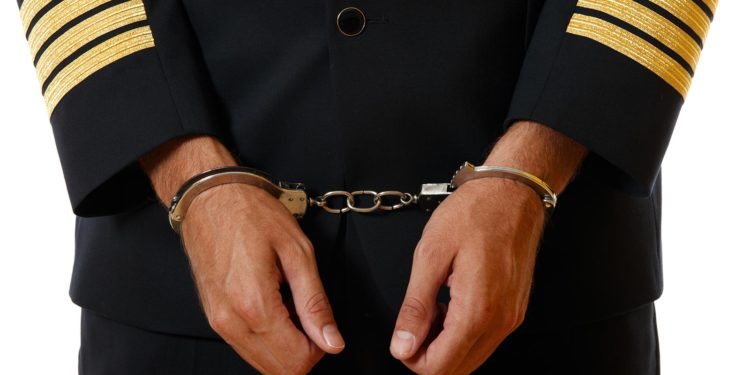Flight Crew Visas: Rules, Risks and Risk-Avoidance

This aviation blog post is part of a series on flight crew visas and continues from our last post entitled “5 Things Business Aviation Operators Should Know About Crew Visa Requirements.”
Flight crew visa issues continue to surface from time to time. These glitches can be problematic, potentially leading to significant delays for your operation and interfering with planned schedules. With so many crew visa regulatory requirements to keep track of and comply with, the risk of making a mistake increases. To reduce this risk, work well in advance of your trip in order to orchestrate correct visas and avoid visa issues when traveling.
1. Know the consequences of having the wrong visa type
Operating without proper visas and documents is never recommended due to the range of serious repercussions. For example, if the wrong type of visa is obtained, or if you land without the required visa, you may be subject to fines, deportation or imprisonment. Your aircraft may be grounded until crew, with proper visas and/or documentation, are able to fly the aircraft out. Also, check the validity period of your passport. Some countries require that passports have at least six months’ remaining validity. This may present a problem even though your visa may still be valid, as it’s associated with an expired or soon-to-be expired passport.
2. Know your options for avoiding visa problems in the country you are visiting
In China, you’ll need a “C”- type crew visa to enter the country as a flight crew member. If you leave China, perhaps for a quick side trip to Hong Kong, you’ll be denied entry back into China unless you possess a multi-entry valid visa. Another example is for U.S. relief crew arriving commercially into Australia to depart with a corporate aircraft. If the crew remains in Australia for five working days or less, they don’t need visas as long as they have letters on their company letterheads stating that information. On the other hand, if the stay is more than five working days, they need letters on company letterheads stating the details explaining why. In this case, customs on arrival will issue special-purpose visas (a type of visa that can be issued only on arrival) with validities of no more than 30 days.
3. Be aware of a country’s unique visa characteristics
If you intend to proceed from Israel to other Middle Eastern countries (besides Jordan, Egypt or the U.A.E.), consider having your Israeli visa stamped on a separate sheet of paper or request a sticker visa that can be removed later. People with Israeli visas stamped in their passports are not allowed to enter Middle Eastern countries, excluding Jordan, Egypt or the U.A.E. In Brazil, be careful that non-flying crew members have proper visas, or they’ll be denied entry. Actively flying crew members arriving in Brazil do not require visas. However, we always recommend that crew members obtain them, as there have been a few issues with Brazilian customs, despite this regulation. In India, there have been cases of crews who’ve arranged 72-hour visas on arrival and, due to schedule changes and the aircraft staying in India longer than anticipated, have had to leave the country before their aircraft. For this reason, it’s always recommended to obtain visas in advance and with as much validity as possible.
4. Consider visa implications for non-U.S. crew entering the U.S.
Non-U.S. flight crew members often require specific types of visas to enter the U.S. Crews on private non-revenue flights may enter with B1/B2 visas. A crew member aboard charter (non-scheduled commercial) aircraft will usually need a C1/D visa. Charter or private non-revenue crew members may also enter the U.S. with A1/A2 visas, as these are diplomatic visas. A range of repercussions – including fines and/or immediate deportation – for not having a visa or the correct type of visa are possible.
5. Understand the rules and requirements of the Visa Waiver Program (VWP)
Operators registered as signatory carriers under the VWP must note that the program benefits are applicable only for passengers and not for crew on the manifest. Non-U.S. crew, even if residents of a VWP-participating country, must have visas prior to entering the U.S. The only exception is if a non-active crew member travels onboard, arrives as a “passenger,” plans to leave as a “passenger,” has a nationality on the approved VWP country list, is dressed in plain non-crew attire and has pre-completed an electronic system for travel authorization. Crew members on the manifest without visas will be subject to fines, penalties and the prospect of immediate deportation. This can cause significant operational delays on arrival in the U.S.
Conclusion
While flight crew visa issues continue to cause problems at locations around the world, such issues are easily avoided with proper planning. Give yourself plenty of time to process the appropriate visa application and documentation requirements. Additionally, it’s best to consider preemptive tactics, such as applying for multiple-entry visas when that’s possible, carrying a second passport and arranging visas for backup crew members. It’s not worth running into a delay, fine or detention as a result of improper visas or lack thereof.
Questions?
If you have any questions about this article, contact me at russellhess@univ-wea.com.




